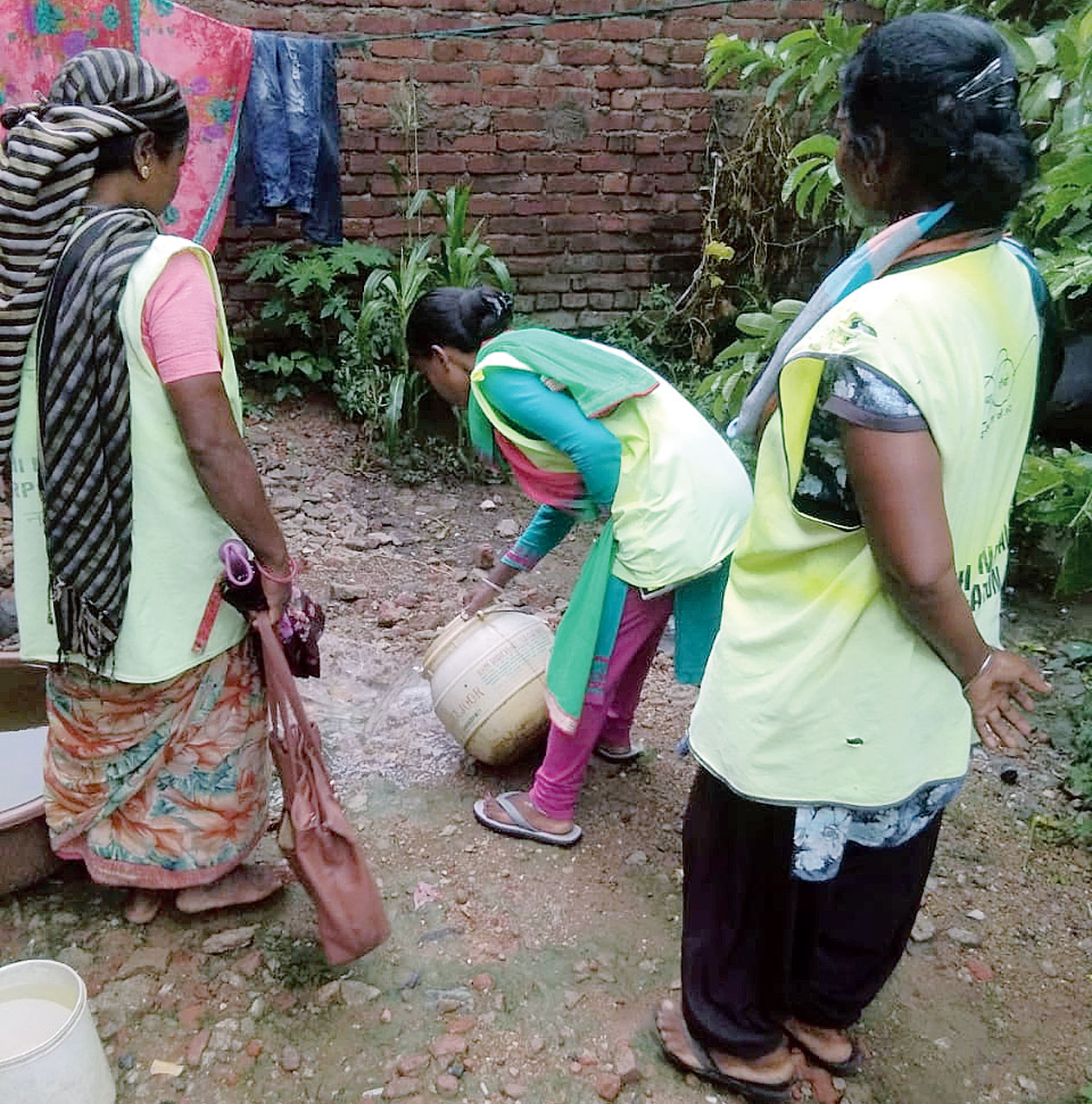The state health department and Ranchi Municipal Corporation have started visiting homes to detect larvae breeding spots and prevent outbreak of vector-borne diseases such as dengue, chikungunya and Japanese encephalitis.
The joint inspection began on Tuesday evening, with the health department staff detecting mosquito breeding spots and taking larvae specimens to identify if they were Aedes aegypti (the species that spreads dengue and chikungunya), and the RMC staff listing the houses and locations (stagnant-water spots) from where the larvae were found.
Owners of houses from where stagnant water and mosquito larvae have been found for the first time have been given a notice with a health advisory to remove the stagnant water.
If no change is found at the same spot during the next inspection, the house owner will be fined anywehere between Rs 100 and Rs 5,000 depending on the size of the house and puddle/container with stagnant water, and number of larvae found.
State entomologist Sagya Singh said they inspected 247 houses across different wards of the RMC. In the 1,580 waterlogged puddles/containers that they inspected, they found 78 with Aedes aegypti larvae in 43 houses.
Singh added: “Based on our suggestion, the RMC team sprayed larvicides. Notices have been served to all owners of houses where mosquito-breeding points were detected. Handbills were also distributed to create awareness against dengue, symptoms and preventive steps.”
The entomologist said last year, they had begun door-to-door inspection of larvae breeding spots but only after outbreak of dengue in Ranchi in August-September.
“This year, we have an early start. We have developed a micro-action plan against vector borne diseases in coordination with RMC to cover at least six wards in the capital daily (there are 53 wards under the RMC). Our inspection which began yesterday evening will continue till November, considered the peak transmission period for vector-borne diseases,” Singh said.
State mission director of National Health Mission (NHM) Shailesh Chaurasia on Wednesday issued a directive to all 24 deputy commissioners to take steps in sync with civil surgeons and local civic bodies to prevent the outbreak of vector-borne diseases.
“The directive includes setting up isolation wards in hospitals and stocking up platelets and medicines at hospitals for the treatment of dengue,” Chaurasia said.
Dengue cases
So far, no dengue or chikungunya cases have been reported in Ranchi. In Jamshedpur, nine patients of dengue and one of chikungunya have been reported till Wednesday.
In 2018, the capital witnessed over 360 cases of dengue and two suspected deaths that the district health officials negated when Elisa tests reported negative.
In Jamshedpur, there were 556 cases of dengue in 2017 in Jamshedpur and its outskirts with four casualties. A massive awareness and surveillance campaign brought down the dengue numbers to 69 with two casualties in 2018.
Contacted, Jusco spokesperson Sukanya Das said they had started their dengue control programme in April, which would last till October. She said they had conducted anti-larval measures at over 2,000 abandoned company quarters and searched over 90,000 houses as part of dengue surveillance measures. They were using cold and thermal fogging to contain the breeding of mosquitoes, she said.











